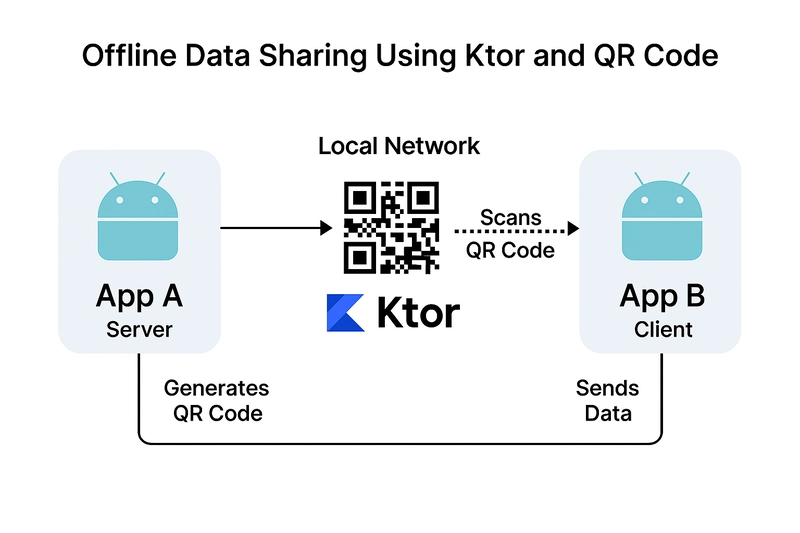The Hidden Vulnerabilities in E-commerce APIs (And How to Secure Them)
E-commerce APIs are the backbone of online businesses, powering everything from payment gateways to inventory management. But as APIs grow in complexity, so do their security risks. Attackers are constantly finding new ways to exploit APIs—often through overlooked vulnerabilities. This article will dive deep into advanced attack vectors that threaten e-commerce APIs and provide developer-centric security strategies to mitigate them. Common Attack Vectors Targeting E-commerce APIs 1️⃣ Broken Object Level Authorization (BOLA) – The #1 API Security Threat Problem: Most e-commerce platforms expose API endpoints that allow users to retrieve data (e.g., order history, customer details). If authorization isn't properly enforced, an attacker can manipulate request parameters to access another user's data. Real-World Exploit: A major online retailer was breached when attackers exploited an API that allowed access to any order ID without proper authorization checks. The breach exposed thousands of customer transactions. Mitigation Strategy: Always verify object-level access using user sessions or OAuth scopes. Implement role-based access control (RBAC) and attribute-based access control (ABAC) for stricter permissions. Regularly audit API endpoints for IDOR (Insecure Direct Object References). 2️⃣ Mass Assignment – How Attackers Modify Data They Shouldn’t Problem: Many APIs accept JSON payloads to update records. If an API allows unintended fields (e.g., user_role or account_balance), an attacker can escalate privileges or modify restricted data. Example Attack: { "user_id": 1234, "email": "hacker@example.com", "is_admin": true } If is_admin isn’t validated, an attacker could promote themselves to admin! Mitigation Strategy: Implement whitelisting for accepted parameters instead of blacklisting. Use DTOs (Data Transfer Objects) to control what fields can be modified. Apply strict input validation at both the frontend and backend layers. 3️⃣ API Rate Limiting & DDoS Protection – The Overlooked Risk Problem: Attackers exploit APIs by sending a high volume of requests, leading to denial of service (DoS) or automated brute-force attacks. Real-World Example: A payment API without rate limits was exploited using an automated bot attack, allowing fraudsters to test stolen credit card details at scale. Mitigation Strategy: Implement rate limiting using API gateways like Cloudflare, AWS API Gateway, or Kong. Use reCAPTCHA or device fingerprinting to detect and block bot-driven attacks. Apply progressive delays or IP-based throttling for repeated failed requests. 4️⃣ API Keys & Authentication – Why Hardcoding is a Security Disaster Problem: Developers often accidentally expose API keys in public repositories, making it easy for attackers to gain access to critical services. Major Incidents: In 2023, several Fortune 500 companies were impacted when their API keys were leaked on GitHub, allowing attackers to access private customer data. In another case, an attacker found hardcoded AWS credentials inside a mobile app's API request logs, leading to unauthorized access. Mitigation Strategy: NEVER hardcode API keys—use environment variables or vaults like HashiCorp Vault or AWS Secrets Manager. Rotate API keys regularly and scope permissions to the bare minimum. Implement HMAC (Hash-based Message Authentication Code) signing for additional security. Advanced API Security Best Practices Now that we’ve covered common attack vectors, let’s focus on advanced strategies to fortify your e-commerce APIs. ✅ 1. Implement OAuth 2.0 and JWT for Secure Authentication Use OAuth 2.0 with short-lived access tokens and refresh tokens. Sign JWTs with a strong private key and validate expiration times. Store refresh tokens securely—NEVER expose them to the frontend. ✅ 2. Enforce Zero-Trust API Access Require strict authentication for every API request, even internal ones. Use mutual TLS (mTLS) for sensitive API communications. Block unused API endpoints—don’t leave outdated versions exposed. ✅ 3. Monitor & Log API Activity for Threat Detection Deploy real-time API monitoring tools like Datadog, Graylog, or ELK Stack. Log API errors, authentication failures, and suspicious behavior. Set up alerts for abnormal request patterns or high-failure login attempts. ✅ 4. Implement Web Application Firewalls (WAFs) and API Security Tools Use Cloudflare WAF, AWS WAF, or Azure WAF to block malicious API requests. Deploy runtime security monitoring with solutions like Tornix Cyber’s API security engine to detect and prevent unauthorized API calls. How Tornix Cyber Can Help Secure Your E-commerce APIs While best practices can reduce risks, real-world API security requires continuous monitoring, intelligent threat detection,

E-commerce APIs are the backbone of online businesses, powering everything from payment gateways to inventory management. But as APIs grow in complexity, so do their security risks. Attackers are constantly finding new ways to exploit APIs—often through overlooked vulnerabilities.
This article will dive deep into advanced attack vectors that threaten e-commerce APIs and provide developer-centric security strategies to mitigate them.
Common Attack Vectors Targeting E-commerce APIs
1️⃣ Broken Object Level Authorization (BOLA) – The #1 API Security Threat
Problem: Most e-commerce platforms expose API endpoints that allow users to retrieve data (e.g., order history, customer details). If authorization isn't properly enforced, an attacker can manipulate request parameters to access another user's data.
Real-World Exploit: A major online retailer was breached when attackers exploited an API that allowed access to any order ID without proper authorization checks. The breach exposed thousands of customer transactions.
Mitigation Strategy:
- Always verify object-level access using user sessions or OAuth scopes.
- Implement role-based access control (RBAC) and attribute-based access control (ABAC) for stricter permissions.
- Regularly audit API endpoints for IDOR (Insecure Direct Object References).
2️⃣ Mass Assignment – How Attackers Modify Data They Shouldn’t
Problem: Many APIs accept JSON payloads to update records. If an API allows unintended fields (e.g., user_role or account_balance), an attacker can escalate privileges or modify restricted data.
Example Attack:
{
"user_id": 1234,
"email": "hacker@example.com",
"is_admin": true
}
If is_admin isn’t validated, an attacker could promote themselves to admin!
Mitigation Strategy:
- Implement whitelisting for accepted parameters instead of blacklisting.
- Use DTOs (Data Transfer Objects) to control what fields can be modified.
- Apply strict input validation at both the frontend and backend layers.
3️⃣ API Rate Limiting & DDoS Protection – The Overlooked Risk
Problem: Attackers exploit APIs by sending a high volume of requests, leading to denial of service (DoS) or automated brute-force attacks.
Real-World Example: A payment API without rate limits was exploited using an automated bot attack, allowing fraudsters to test stolen credit card details at scale.
Mitigation Strategy:
- Implement rate limiting using API gateways like Cloudflare, AWS API Gateway, or Kong.
- Use reCAPTCHA or device fingerprinting to detect and block bot-driven attacks.
- Apply progressive delays or IP-based throttling for repeated failed requests.
4️⃣ API Keys & Authentication – Why Hardcoding is a Security Disaster
Problem: Developers often accidentally expose API keys in public repositories, making it easy for attackers to gain access to critical services.
Major Incidents:
- In 2023, several Fortune 500 companies were impacted when their API keys were leaked on GitHub, allowing attackers to access private customer data.
- In another case, an attacker found hardcoded AWS credentials inside a mobile app's API request logs, leading to unauthorized access.
Mitigation Strategy:
- NEVER hardcode API keys—use environment variables or vaults like HashiCorp Vault or AWS Secrets Manager.
- Rotate API keys regularly and scope permissions to the bare minimum.
- Implement HMAC (Hash-based Message Authentication Code) signing for additional security.
Advanced API Security Best Practices
Now that we’ve covered common attack vectors, let’s focus on advanced strategies to fortify your e-commerce APIs.
✅ 1. Implement OAuth 2.0 and JWT for Secure Authentication
- Use OAuth 2.0 with short-lived access tokens and refresh tokens.
- Sign JWTs with a strong private key and validate expiration times.
- Store refresh tokens securely—NEVER expose them to the frontend.
✅ 2. Enforce Zero-Trust API Access
- Require strict authentication for every API request, even internal ones.
- Use mutual TLS (mTLS) for sensitive API communications.
- Block unused API endpoints—don’t leave outdated versions exposed.
✅ 3. Monitor & Log API Activity for Threat Detection
- Deploy real-time API monitoring tools like Datadog, Graylog, or ELK Stack.
- Log API errors, authentication failures, and suspicious behavior.
- Set up alerts for abnormal request patterns or high-failure login attempts.
✅ 4. Implement Web Application Firewalls (WAFs) and API Security Tools
- Use Cloudflare WAF, AWS WAF, or Azure WAF to block malicious API requests.
- Deploy runtime security monitoring with solutions like Tornix Cyber’s API security engine to detect and prevent unauthorized API calls.
How Tornix Cyber Can Help Secure Your E-commerce APIs
While best practices can reduce risks, real-world API security requires continuous monitoring, intelligent threat detection, and proactive defense.
Tornix Cyber provides:
✅ AI-driven API behavior analysis to detect suspicious activity in real time.
✅ Automated vulnerability scanning to identify misconfigurations and insecure endpoints.
✅ Adaptive rate limiting to prevent automated bot-driven API attacks.
✅ Fraud detection mechanisms to identify unauthorized transactions and credential stuffing attempts.
E-commerce businesses using Tornix Cyber's API security engine have seen a 60% drop in fraudulent API requests and zero API-related breaches in the last 12 months.








































































































































































![[The AI Show Episode 143]: ChatGPT Revenue Surge, New AGI Timelines, Amazon’s AI Agent, Claude for Education, Model Context Protocol & LLMs Pass the Turing Test](https://www.marketingaiinstitute.com/hubfs/ep%20143%20cover.png)




































































































































![From drop-out to software architect with Jason Lengstorf [Podcast #167]](https://cdn.hashnode.com/res/hashnode/image/upload/v1743796461357/f3d19cd7-e6f5-4d7c-8bfc-eb974bc8da68.png?#)











































-11.11.2024-4-49-screenshot.png?width=1920&height=1920&fit=bounds&quality=70&format=jpg&auto=webp#)

























































































_jvphoto_Alamy.jpg?#)

















































































































![Apple Rushes Five Planes of iPhones to US Ahead of New Tariffs [Report]](https://www.iclarified.com/images/news/96967/96967/96967-640.jpg)
![Apple Vision Pro 2 Allegedly in Production Ahead of 2025 Launch [Rumor]](https://www.iclarified.com/images/news/96965/96965/96965-640.jpg)


































































































































